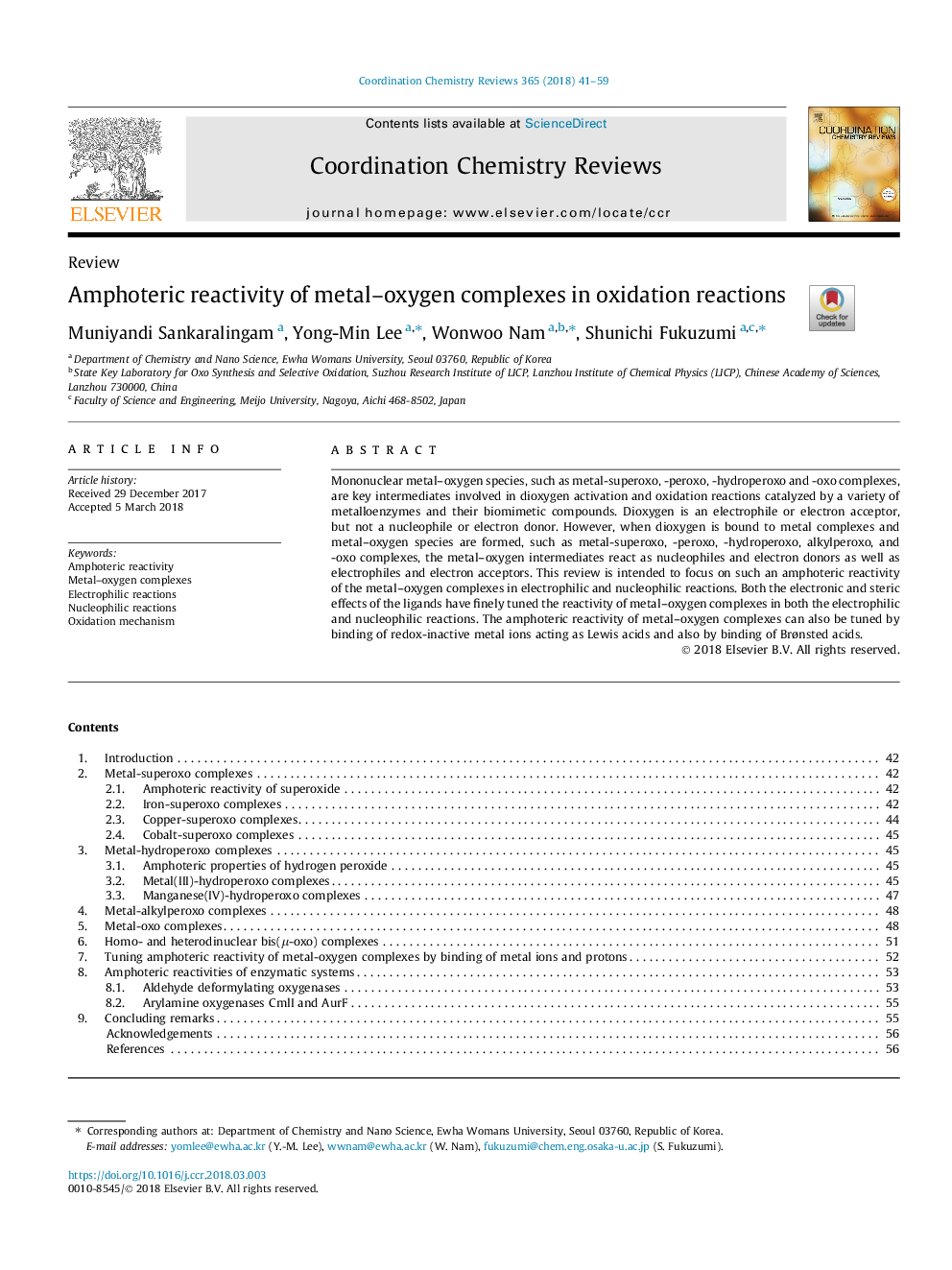| Article ID | Journal | Published Year | Pages | File Type |
|---|---|---|---|---|
| 7747538 | Coordination Chemistry Reviews | 2018 | 19 Pages |
Abstract
Mononuclear metal-oxygen species, such as metal-superoxo, -peroxo, -hydroperoxo and -oxo complexes, are key intermediates involved in dioxygen activation and oxidation reactions catalyzed by a variety of metalloenzymes and their biomimetic compounds. Dioxygen is an electrophile or electron acceptor, but not a nucleophile or electron donor. However, when dioxygen is bound to metal complexes and metal-oxygen species are formed, such as metal-superoxo, -peroxo, -hydroperoxo, alkylperoxo, and -oxo complexes, the metal-oxygen intermediates react as nucleophiles and electron donors as well as electrophiles and electron acceptors. This review is intended to focus on such an amphoteric reactivity of the metal-oxygen complexes in electrophilic and nucleophilic reactions. Both the electronic and steric effects of the ligands have finely tuned the reactivity of metal-oxygen complexes in both the electrophilic and nucleophilic reactions. The amphoteric reactivity of metal-oxygen complexes can also be tuned by binding of redox-inactive metal ions acting as Lewis acids and also by binding of Brønsted acids.
Related Topics
Physical Sciences and Engineering
Chemistry
Inorganic Chemistry
Authors
Muniyandi Sankaralingam, Yong-Min Lee, Wonwoo Nam, Shunichi Fukuzumi,
